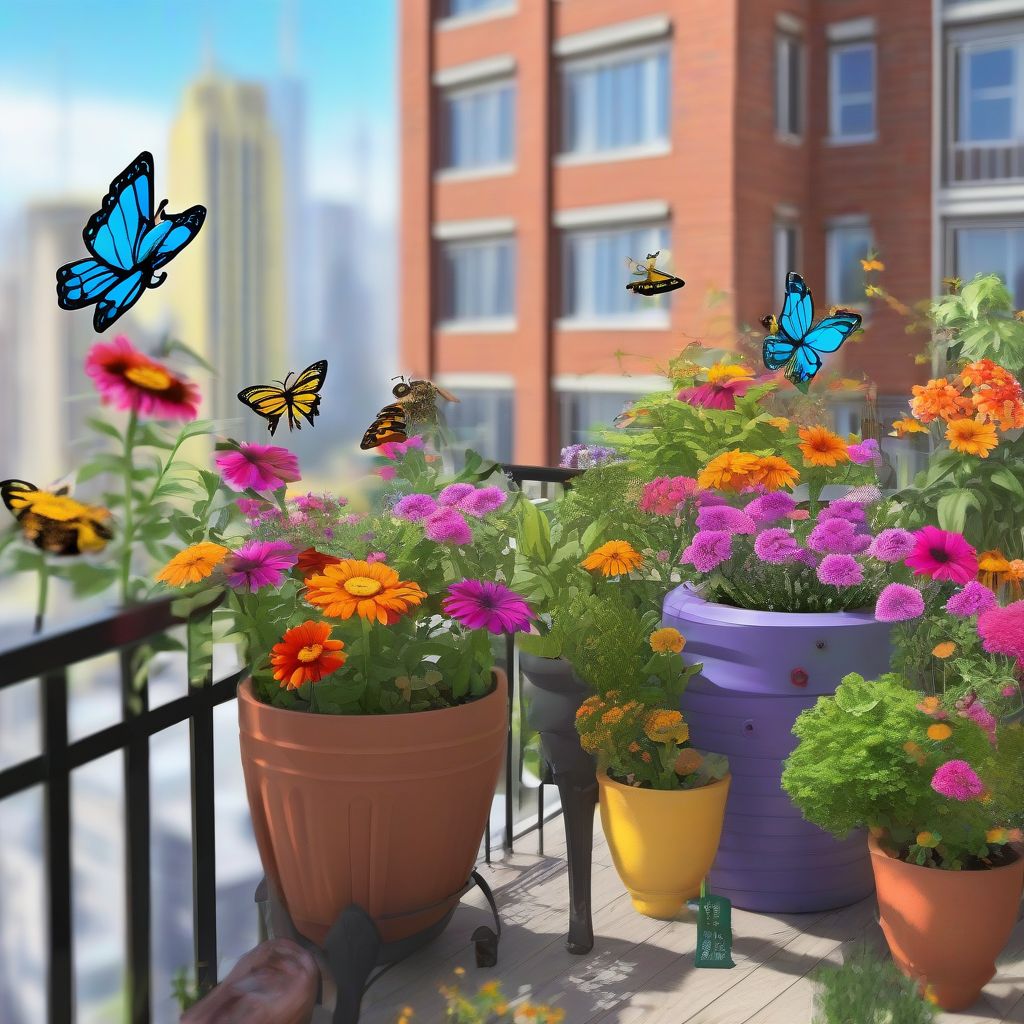Have you ever dreamt of plucking fresh, juicy tomatoes straight from your windowsill or snipping fragrant herbs right in your kitchen? In the concrete jungle of urban life, this dream might seem out of reach. But, what if I told you there’s a way to bring the joy of gardening to even the smallest urban spaces? That’s where the magic of container gardening comes in, offering a powerful way to not just beautify our surroundings but contribute to a more sustainable way of life.
Bringing Nature Home: The Benefits of Container Gardening in Cities
Urban dwellers often face a disconnect from nature, surrounded by towering buildings and limited green spaces. Container gardening offers a bridge back to the natural world, transforming balconies, rooftops, and even windowsills into thriving micro-gardens.
But the benefits go far beyond aesthetics:
1. Food Security and Local Sourcing:
Imagine stepping outside your door to harvest fresh vegetables for your next meal! Container gardening allows city dwellers to grow their own food, even in limited spaces. This not only promotes healthier eating habits but also reduces reliance on supermarket produce that often travels long distances, contributing to carbon emissions.
“By growing some of our own food, we become more aware of the natural resources required for food production, fostering a deeper appreciation for the food we eat.” – Ron Finley, Guerrilla Gardener
2. Green Therapy: Boosting Mental Well-being
The act of gardening has been proven to reduce stress and improve mental well-being. Nurturing plants provides a sense of peace, purpose, and connection with nature, counteracting the hustle and bustle of urban life. Studies show that even short periods of gardening can lower levels of the stress hormone cortisol.
3. Enhancing Urban Biodiversity: Creating Havens for Pollinators
Cities can become biodiversity deserts, lacking the diverse ecosystems needed for insects and birds to thrive. Container gardens, especially those planted with pollinator-friendly flowers and herbs, provide essential food sources and habitats for bees, butterflies, and other beneficial creatures. This helps restore ecological balance and strengthens the overall health of the urban environment.
 Urban Container Garden with Pollinators
Urban Container Garden with Pollinators
4. Sustainable Living: Reducing Food Waste and Carbon Footprint
Composting food scraps to nourish your container garden closes the loop on food waste, reducing the amount of organic material ending up in landfills. Furthermore, growing your own food locally minimizes transportation distances and the associated environmental impact.
5. Building Community: Sharing the Love of Gardening
Container gardening can be a social activity, bringing neighbors together through shared passions. Community gardens, rooftop gardening clubs, and seed swaps foster social connections and a sense of belonging while promoting sustainable practices.
Planting the Seeds of Change: How Container Gardening Contributes to a Greener Future
As our cities grow and urban populations increase, it’s crucial to find innovative ways to live sustainably. Container gardening plays a vital role in this transition by:
1. Mitigating the Urban Heat Island Effect: Cooling Our Cities Naturally
Concrete buildings and paved surfaces absorb and radiate heat, creating “urban heat islands” that can significantly increase temperatures in cities. Container plants, especially those on rooftops and balconies, help combat this effect by providing shade, absorbing sunlight, and releasing moisture into the air through transpiration, naturally cooling their surroundings.
2. Improving Air Quality: Filtering Out Pollutants and Increasing Oxygen
Plants are natural air purifiers, absorbing carbon dioxide and releasing oxygen during photosynthesis. In urban environments, where air pollution is often a concern, container gardens act as mini-filters, removing harmful pollutants like nitrogen dioxide and ozone from the air we breathe.
3. Conserving Water: Promoting Efficient Irrigation Practices
Container gardening allows for more controlled watering, minimizing water waste compared to traditional in-ground gardens. Using water-wise techniques like drip irrigation and self-watering planters further conserves this precious resource.
Getting Started with Your Urban Oasis: Tips for Successful Container Gardening
Ready to embark on your container gardening journey? Here are some tips to get you started:
- Choose the Right Containers: Select containers with adequate drainage holes and consider the size and material based on the plants you want to grow.
- Use Quality Potting Mix: Invest in a lightweight, well-draining potting mix specifically designed for containers.
- Select Suitable Plants: Opt for varieties that thrive in containers and are well-suited to your local climate and available sunlight.
- Water Wisely: Water deeply but infrequently, allowing the soil to dry slightly between waterings to prevent root rot.
- Fertilize Regularly: Container plants have limited access to nutrients, so regular fertilization is crucial for healthy growth.
- Protect from Pests and Diseases: Inspect plants regularly and take appropriate measures to prevent and address any pest or disease issues.
Conclusion: Cultivating a Sustainable Future, One Container at a Time
Container gardening is more than just a trendy hobby—it’s a powerful tool for creating healthier, more sustainable, and vibrant urban environments. By embracing the principles of container gardening, we can reconnect with nature, improve our well-being, and contribute to a greener future for generations to come.
So, why not start your own urban oasis today? No matter how small your space, every container garden makes a difference. Share your experiences, tips, and questions in the comments below—let’s grow a greener future together, one pot at a time!
[amazon bestseller=”container gardening for beginners”]
